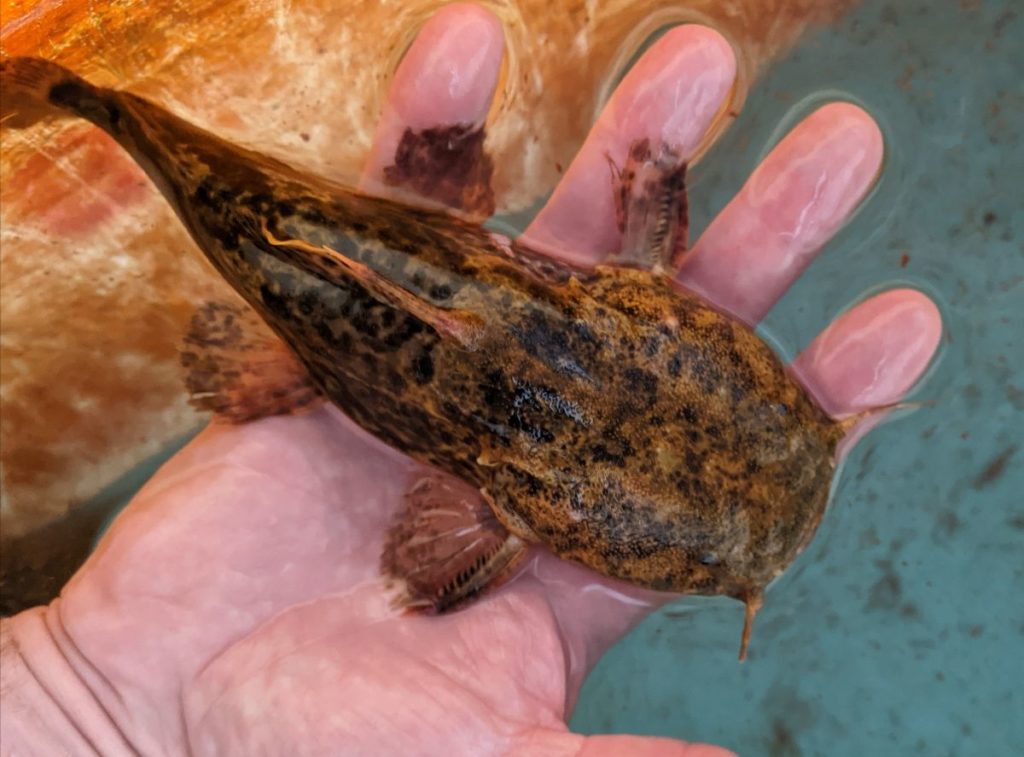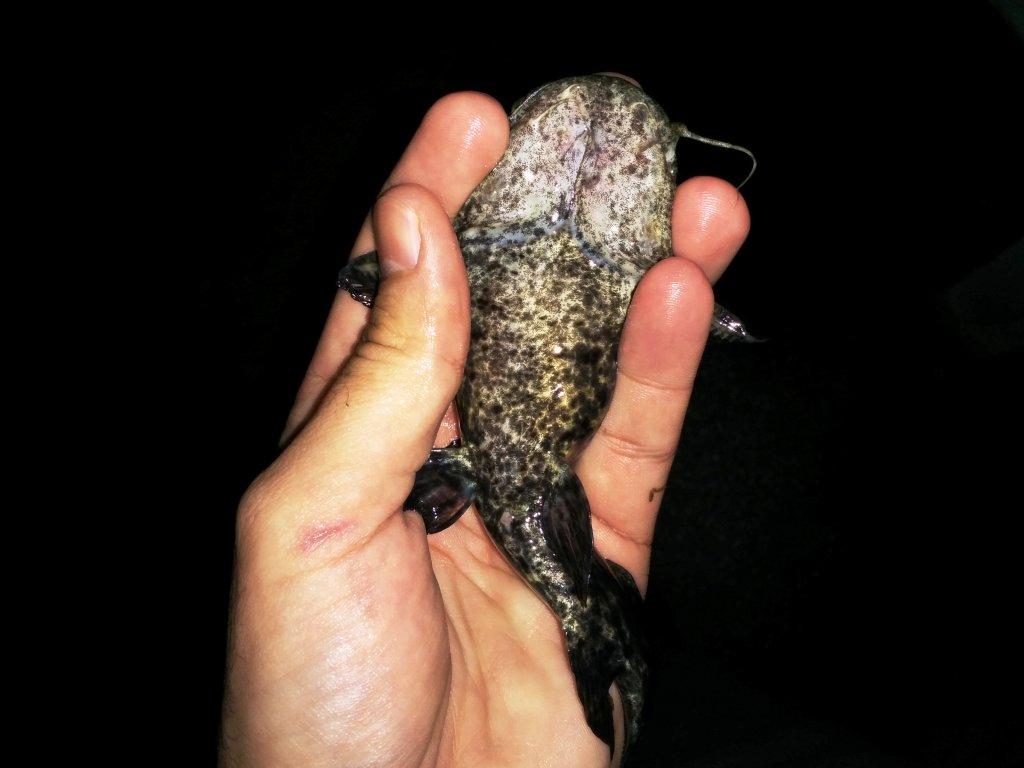
via Nautilus Tropical Fish Wholesale
Sales manager Joe Hiduke recently shared his insights on some truly curiuos predatory catfish that occasionally show up in Colombian imports.
“Jelly cats are in from Colombia. This is the fish that frequently shows up when you order the giant Pseudopimelodus bumblebee cats from Colombia, and you often don’t know what you’re getting till you open bags.
“When I’ve received these fish in the past they’ve been significantly uglier. This batch is very nice, mottled in various shades of brown approaching yellow and red, but they’re frequently more solid-colored, and plain brown or grayish brown.”

“These usually come in as Cephalosilurus fowleri, but that species is restricted to Rio Sao Francisco in Brazil so these Colombian fish are more likely C. apurensis [which originates from neighboring Venezeula – Ed.]. Their max size is around a foot long, with females being larger and more robust than males.
“While a lot of big predatory cats tend to ignore fish they can’t eat, that is not the case with jelly cats. They have a reputation as being highly territorial and aggressive. They’re likely to squabble with any other fish living on the bottom of the tank competing for hiding spots, and they’re also likely to squabble with fish not on the bottom of the tank. For a fish coming from the wild, unless they’re in a huge aquarium, the entire tank is going to seem like the bottom [and thus the jelly cat’s territory, at least from the catfish’s perspective]. They may be OK with bigger, faster schooling fish, or cichlids big enough to not fit in their mouths, but watch them closely with any tankmates. They are ideally suited as a solitary pet fish.
“Overall, they are somewhat like the gulper cats in that they’re big-mouthed predators, but apparently, they’re entirely less tolerant of their tank-mates. They may need live feeders initially, but they’ll quickly learn to eat frozen/thawed fish from your fingers.”
###





